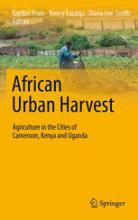/ library resources
Showing items 1 through 9 of 78.A majority of the research on forest fragmentation is primarily focused on animal groups rather than on tree communities because of the complex structural and functional behavior of the latter.
Land-use planners have a critical role to play in building vibrant, sustainable and hazard resilient communities in New Zealand. The policy and legal setting for natural hazards planning provides a solid foundation for good practice.
Artemisia sphaerocephala and A. ordosica are two dominant shrub species in Mu Us sandy land (Inner Mongolia, China) and are widely used for vegetation restoration.
Plantations are established for a variety of reasons including wood production, soil and water conservation, and more recently, carbon sequestration.
Several TerraSAR-X satellite images acquired in high resolution spotlight mode with different polarisations for two study sites in southern Germany were used to distinguish forest from other land cover classes (agriculture, built-up, water bodies) using logistic regression models.
This paper introduces the concept of “spatial location satisfaction” and examines its relation to the individual demand for homeownership.
The availability of spatially continuous data layers can have a strong impact on selection of land units for conservation purposes. The suitability of ecological conditions for sustaining the targets of conservation is an important consideration in evaluating candidate conservation sites.
Fossil pollen and plant macrofossils over the last 2000 years are documented from three small forest hollows in Southern Sweden. One of the sites is inside a 5 ha highly prized old growth mixed Fagus sylvatica and Picea abies forest of high biodiversity which has been protected since 1940.
Pagination
Land Library Search
Through our robust search engine, you can search for any item of the over 73,000 highly curated resources in the Land Library.
If you would like to find an overview of what is possible, feel free to peruse the Search Guide.


